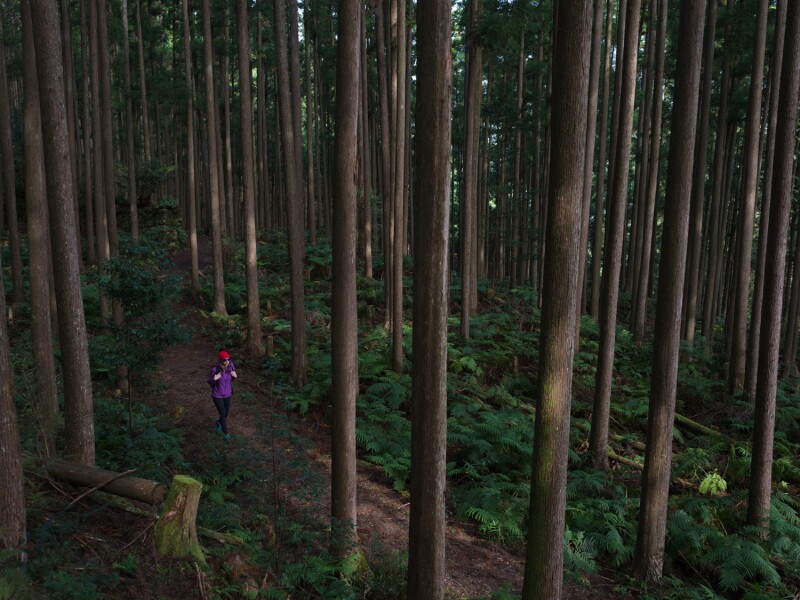The world has only two UNESCO World Heritage pilgrimage routes: El Camino de Santiago, in Spain; and Kumano Kodo, in Japan. This 10th-century network of trails, some 100 miles south of Kyoto, received its designation in 2004. And today, pilgrims seeking spiritual rebirth make the trek in hopes of eliminating impurities from body and spirit—whether in this life or those of the past.

The St. Regis Osaka, Osaka, Japan
Get Grounded in Osaka
Begin feeling in harmony with Japanese nature and culture even before you hit the trail. At The St. Regis Osaka, you’ll find 160 spacious rooms and suites; the latter feature calming themes of flowers and trees like lily, pines, and wisteria. That sense of beauty imbues the entire luxurious property, thanks to its art and ceramics. Even headboards serve to set the intention, made of Kawashima silk and featuring motifs of gingko and cherry blossom—symbols of Osaka and Japan.
Visit Osaka Castle, one of Japan’s most famous landmarks, then fully embrace the spirit of your journey at Shitenno-ji Temple; founded in 593, it’s one of Japan’s oldest temples. Wander around the 13th-century stone gate, five-story pagoda, and Japanese garden with ponds and pathways.

Kumano Kodo, Japan. Photo by Peter Bohler
Peter Bohler
Embrace Your Inner Pilgrim
The pilgrimage begins a little over two hours from Osaka, in Takijiri Oji, snaking east through the dense forests of the Kii Mountains, at times overlooking the Pacific Ocean, and ending at the Nachi Taisha shrine.
Plan on three to six days, depending on the route. Along the way, you’ll find ryokan and minshuku (guesthouses); places serving hot meals; and Japanese onsen. Go with a group or make it a solo quest.
One option is the 42-mile Nakahechi or “Imperial” route, with more than 100 Shinto and Buddhist shrines along the way. Farm towns, mountain passes, and waterfalls—along with forests of bamboo, cedar, and cypress—are all part of the experience.

Nachi Taisha, Nachikatsuura, Japan. Photo by Peter Bohler
Peter Bohler
You’ll pass sacred areas like Waroda-ishi rock, where it’s believed that deities meet for tea. Another section involves squeezing between two boulders (called Tainai Kuguri), a test of faith for the hiker and an opportunity to be spiritually reborn. You’ll find the occasional stretch of strenuous hiking, but the payoffs can be scenic as well as spiritual; the Hyakken-gura lookout, for example, serves up dramatic vistas of the sacred Kumano Mountains.
While your stops along the way will have food, the wilderness stretches in between will not—so ask your hosts to pack lunches. They’ll help maintain your energy and help keep daru at bay: invisible serpent-witches that can enter your body and wreak havoc if you become too fatigued or hungry.
You’ll end up at Nachi Taisha, the last grand shrine of the Kumano Kodo—a pagoda surrounded by mossy rocks with a gorgeous waterfall that’s home to Izanami no Mikoto (the Shinto goddess of creation and death) and Kannon (the Buddhist goddess of mercy). Nachi Taisha can get crowded, because people can drive here. But hold onto the Zen feeling you hopefully discovered on your hike, and this holy place will also play host to a more peaceful you.
Empower your own Travel Tales with The Marriott Bonvoy Boundless™ Card. Learn more at MarriottBoundlessCard.com.











